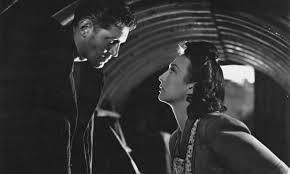A Crossroads of Cinematic Aesthetics
Indian cinema, famous for its vividly hued song-and-dance spectacles and grand-scale melodramas, has in recent years ventured into darker, more introspective realms. The result of this transition is a stylistic hybrid indebted to classic film noir a genre characterized by its dark cinematography, morally ambiguous figures, and crime-fiction tropes. “Indian Ink: Film Noir in Unlikely Places” looks at how Indian filmmakers have appropriated this Western genre and reworked it in an Indian cultural and cinematic framework to produce a very nuanced and layered cinematic style.
What is Film Noir? A Brief Overview
Originating in the 1940s and 1950s Hollywood, film noir is not just a genre but a cinematic style characterized by:
- Stark lighting contrasts (chiaroscuro)
- Urban settings
- Femme fatales
- Anti-heroes and detectives
- Themes of cynicism, fatalism, and moral ambiguity
Classic examples include Double Indemnity, The Maltese Falcon, and Sunset Boulevard. These films reflected post-war anxieties and the darker side of the American dream.
Indian Cinema’s Shift Toward Noir Elements
Traditionally, Bollywood thrived on song-and-dance routines, melodrama, and happy endings. However, contemporary Indian filmmakers have increasingly moved toward realism, psychological complexity, and socio-political critique. This transition has made noir’s elements more relevant than ever.
Early Traces: Guru Dutt and 1950s Melancholia
Guru Dutt’s Pyaasa (1957) and Kaagaz Ke Phool (1959) are often cited as early Indian counterparts to film noir. These films featured troubled protagonists, doomed romance, and expressive use of shadows, aligning them with noir sensibilities.
Contemporary Takes: Neo-Noir in Modern India
- Johnny Gaddaar (2007): Stylish crime thriller with betrayal at its core
- Talaash (2012): Psychological drama steeped in mystery and moral dilemmas
- Andhadhun (2018): A darkly comic crime tale with unpredictable twists
These films reflect a new wave of Indian noir that is both stylistically daring and thematically bold.
Stylistic Fusion: How Indian Noir Reimagines Classic Tropes
Visual Style
Indian noir blends traditional noir lighting and framing with local aesthetics:
- Use of shadows and silhouettes in urban Indian settings
- Warm color palettes juxtaposed with cold emotional tones
- Camera angles that emphasize emotional isolation
Characters
While classic noir features detectives and femme fatales, Indian versions adapt these to local contexts:
- Police inspectors with moral conflicts (Raman Raghav 2.0)
- Strong, morally ambiguous women (Aaranya Kaandam)
- Ordinary citizens drawn into crime (Ugly)
Narrative Structure
Indian noir often employs non-linear storytelling, unreliable narrators, and twist endings, reflecting a complex worldview where truth is elusive.
Cultural Reinterpretations: Noir Meets Indian Themes
Karma and Fate
While classic noir emphasizes fatalism, Indian noir often incorporates spiritual or karmic dimensions. Characters may face retribution that feels both inevitable and culturally resonant.
Socio-political Commentary
Many Indian noir films tackle issues like:
- Corruption in law enforcement
- Class divide
- Gender-based violence
These themes not only align with noir’s inherent skepticism of institutions but also speak to India’s unique socio-political fabric.
Language and Music
Indian noir retains elements of traditional cinema, including:
- Dialogues rich with metaphor and irony
- Sparse but impactful background scores that enhance mood
- Occasional use of songs, though more subdued and thematic
Why This Fusion Resonates Today
Changing Audience Preferences
Modern Indian audiences, particularly urban millennials and Gen Z, are drawn to complex narratives and darker themes. This shift mirrors global trends toward grittier, more nuanced storytelling.
Global Exposure
Streaming platforms like Netflix and Amazon Prime have exposed Indian viewers to international cinema, increasing appreciation for noir aesthetics. At the same time, these platforms provide a global stage for Indian noir films.
Artistic Freedom
The rise of indie cinema and OTT platforms has given filmmakers greater creative control, allowing for experimentation with tone, pacing, and style core elements of noir.
The Future of Indian Noir: Opportunities and Challenges
Integration with Tech-Driven Storytelling
AI, data analytics, and viewer preference modeling can help predict successful noir elements, allowing filmmakers to fine-tune scripts and visual designs. Machine learning can also enhance post-production effects, such as mood-centric color grading.
Balancing Style and Substance
As Indian noir grows, there is a risk of over-stylization at the cost of narrative depth. Maintaining a balance will be crucial to its sustainability.
Expanding Beyond Urban Settings
Future noir narratives could explore rural or semi-urban India, incorporating regional cultures and issues while retaining core noir elements.
A Genre Reborn Through Cultural Alchemy
The mixing of film noir and traditional Indian storytelling is no mere stylistic exercise it is an expression of a society wrestling with dramatic change, moral morass and a desperation to know the truth. As India reels itself in, and out, of its (new)zanskaar years, the whispers of noir will only grow louder, providing respite but for more than just the imagination.
This evolving genre serves as a mirror, reflecting both shadows and light, tradition and innovation. And in doing so, Indian noir emerges not as an imitation but as a compelling reimagination of a timeless cinematic form.
FAQ: Echoes of Film Noir in the Indian Context
Q1: What defines a film as “noir” in the Indian context?
A: Indian noir adapts classic noir elements like moral ambiguity and shadowy visuals, but fuses them with local cultural themes such as karma, familial duty, and socio-political commentary.
Q2: Which are some must-watch Indian noir films?
A: Andhadhun, Talaash, Johnny Gaddaar, Raman Raghav 2.0, and Ugly are excellent examples.
Q3: How does Indian noir differ from Hollywood film noir?
A: While Hollywood noir often centers on crime and fatalism, Indian noir blends these with spiritual undertones, local conflicts, and occasionally, musical elements.
Q4: Is Indian noir a growing trend?
A: Yes, the genre is gaining traction due to increased demand for sophisticated storytelling and the global reach of streaming platforms.
Q5: Can film noir influence future Indian genres?
A: Absolutely. The stylistic and thematic elements of noir could influence genres like horror, thriller, and even romance, making them richer and more layered.